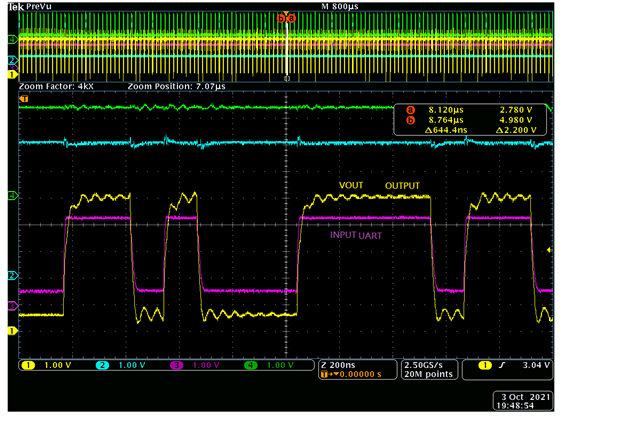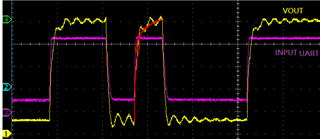Other Parts Discussed in Thread: SN74LVC2T45
team, there is a question about the UART (8Mbps) application with LSF0102 from 3.3V to 5.0V translator. We found the output voltage having a voltage drop of 0.6V-0.7V when low state. is this behavior normally? if not so, how to solve this problem?
Please also find the block diagram as attached file. Please check if the pull-up resistor needs to be changed or not?
Below waveform is using LSF0102 without Pull-up resistor:




